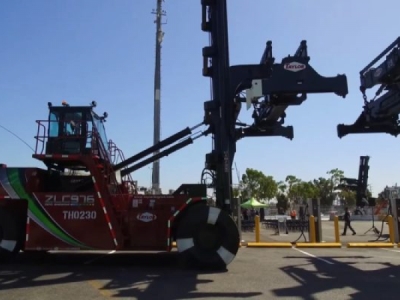
Posted on August 11, 2020
The Port of Los Angeles has announced that the world’s first zero-emission top handles are now being used in daily operations at the Everport Container Terminal.
In a statement, the Port said the handlers were designed an built by Taylor Machine Works, a leading heavy-duty equipment manufacturer and the largest supplier of top handlers in service at the Port.
Also known as top picks, top handlers are off-road vehicles with an overhead boom for loading containers weighing up to 100,000 pounds onto lorries and trains, unloading them, and stacking them on terminals between pickups and deliveries.
“We are pleased with performance results that we are receiving from drivers, mechanics and Everport management as the equipment is tested daily in real-world conditions,” said Port of Los Angeles Executive Director Gene Seroka.
“We are doing everything possible to advance commercially feasible solutions to meet our goal of transitioning all cargo-handling equipment to zero emissions by 2030.”
The top handlers run on a one-megawatt battery designed to operate for up to 18 hours between charges. Each top handler has a data logger for tracking hours of operation, charging frequency, energy usage and other performance indicators.
Additionally, drivers and mechanics are providing input on the maneuverability, noise level and safety of the equipment.
The battery-electric top handlers are a key component of the Port’s $7.7 million Everport Advanced Cargo-Handling Demonstration Project. The California Energy Commission (CEC) is supporting the large-scale zero-emissions technology project with a $4.5 million sustainability grant.
The Everport demonstration is one of 16 projects in which the Port is either the lead agency or a participant working with multiple partners to test near-zero emissions and zero-emissions engines, emissions control technology, and alternative fueling and charging stations.
In addition to the battery-electric top handlers, the projects include testing ultra-low NOx renewable natural gas equipment and fully battery-electric fuel cell heavy-duty trucks; battery-electric forklifts, yard tractors, and rubber-tired gantry cranes; and emissions control equipment on large ships and harbor craft.
Eliminating tailpipe emissions from cargo-handling equipment is essential to achieving the Port’s larger goal of reducing greenhouse gases (GHGs) from all port-related sources. Port targets call for reducing GHGs 40% below 1990 levels by 2030 and 80% below 1990 levels by 2050.
Source: porttechnology.org





